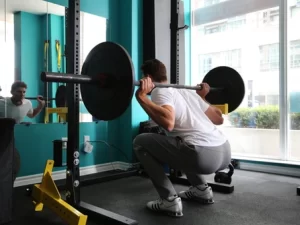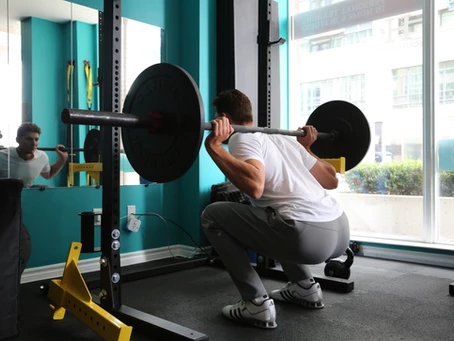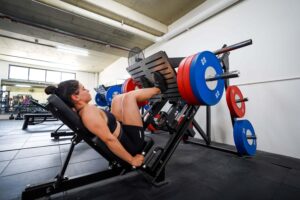
Let’s clean up that squat.
The squat might just be the most butchered compound movement I witness people doing at the gym.
Too often do I see people struggle to progress the weight or make the squat look smooth or efficient. It’s for this reason that many develop a mindset of avoiding the squat or giving it the lowest training priority. Monday chest day, Wednesday back day, Friday leg day?” Hmmm….? I’ll do it next week”. Sound familiar? That was me once.
Many people opt to skip it altogether in their journey to chasing that dream body. Some opt to substitute the squat altogether instead, using isolated exercises and machines to replicate the growth that they miss from a well-performed squat. Don’t get me wrong, leg extensions, leg press, lunges and hamstring curls all play a role in developing legs but in my experience, none can quite replicate the strength gain and slabs of muscle that well-performed squats develop in the lower body.
So, in saying all this I am going to share some very basic steps that helped me improve my squats in the earlier stages of my training. Bear in mind, this is targeted for beginners and for people who feel they haven’t worked out the most comfortable squat for themselves yet. If you’re an advanced squatter this most probably won’t be the help you’re looking for.
1: Start from the bottom… Always start from the bottom.
Is your house built on sand or rock?
-
You can’t expect to comfortably execute the squat if you cannot trust that your bottom position is stable and well planted. A simple tip that tends to work well with people is imagining that the feet are gripping the floor. Take your shoes off and stand on a bath towel- clench your toes and scrunch up the towel. Hold this nice and tight and go through slow descending squats. This tends to prevent rocking back and forth. This is why squatting in running shoes is a big no-no when learning to use your feet.
-
Tightness in calf muscles prevents the knees from driving forward over the toes. This tends to be the largest cause of rounding in the spine. Spend time prior to your session warming up and stretching your calf muscles. Unfortunately, it takes time and consistency before we see changes in calf tightness. So, a trick to train around this is to squat with an elevated heel using either weightlifting shoes or putting a small block under your heel.
-
Focusing on grabbing the floor with your feet as well as warming up and stretching the calves. Combining this with a front squat variation will tend to bring about the most natural squatting stance that is comfortable and stable. This would work well as a pre-squat warm-up to help understand where the body should sit and how it should feel.
2: Focus on the brace.
-
Imagine a hollowed-out straw trying to separate two bricks? You’d expect it to fold and crumble under the pressure right? The same principle applies when squatting. Large amounts of force are applied from the feet and the weight cradled over the upper back. If the core is not braced or stabilised, the lift will be inefficient, energy will be lost from the ground to the bar and you place yourself at risk of straining muscles in your back.
-
Let’s turn that straw into a metal pole- focus on breathing in and expanding through your lower abdomen and squeeze it hard. This will solidify the midsection.
-
Using your lats by pulling the bar down into your back will also create additional tightness that assists with the bracing – no more bending, swaying or folding!
3: Last but certainly not least…. Find the comfortable bar position.
-
This part is going to take a little bit of trial and error to get right. In general terms, the bar should be positioned anywhere between the C7 (the bony lump at the base of the neck) to the lower part of the rear shoulders and traps. Typically speaking, a higher bar position will equal a more vertical squatting position. Whilst a lower bar position general correlates with a more tilted chest position. For general trainers and people trying to gain size and strength in their legs. Neither is necessarily better than the other and it comes down to whatever works best. Try and retry relatively light squats whilst slightly adjusting bar position and hand width. Whichever bar position equates to a stable and strong bottom position is generally the best for that individual.
I am well aware that there are multiple different factors that can affect how well someone squat.
This simply covers the most basic of principles that I see most people get wrong. Take your time and apply these principles to your squat.
Work on lighter loading and making the movement feel smooth and efficient first before progressing weight. If your squat progresses from here, great! If you’re still stuck, look at getting a coach to have a close look in real-time, this is where the best improvements are made.
Hope this helps!




